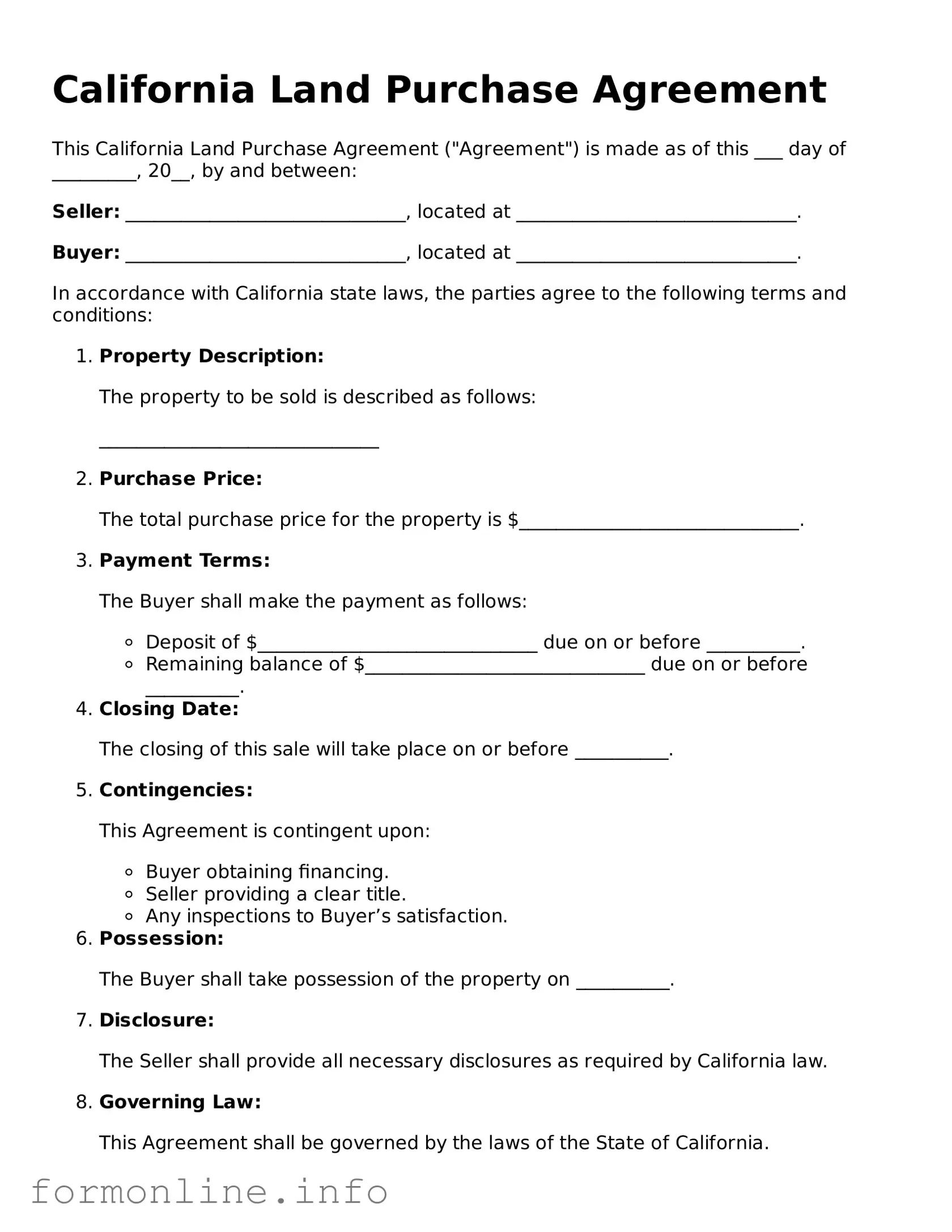The California Land Purchase Agreement form shares similarities with the Purchase and Sale Agreement. This document outlines the terms under which a buyer agrees to purchase property from a seller. Like the Land Purchase Agreement, it includes essential details such as the purchase price, property description, and the responsibilities of both parties. The clarity in the terms helps prevent misunderstandings and ensures a smooth transaction process.
Another document that resembles the California Land Purchase Agreement is the Residential Purchase Agreement. This form is specifically tailored for residential properties and includes provisions unique to residential transactions, such as disclosures about the property's condition and financing contingencies. Both documents aim to protect the interests of buyers and sellers while facilitating a clear understanding of the transaction's terms.
The Commercial Purchase Agreement also parallels the California Land Purchase Agreement. This document is designed for commercial real estate transactions and includes specific clauses related to zoning, lease agreements, and property use. While both agreements serve the purpose of transferring property ownership, the Commercial Purchase Agreement addresses the unique complexities involved in commercial real estate deals.
Similarly, the Real Estate Option Agreement is akin to the California Land Purchase Agreement. This document grants a potential buyer the right, but not the obligation, to purchase a property within a specified timeframe. While the Land Purchase Agreement finalizes the sale, the Option Agreement allows for flexibility, giving buyers time to assess the property before making a commitment.
In much the same way that other property sale documents play a vital role in real estate transactions, the Mobile Home Bill of Sale is essential for transferring ownership of mobile homes, ensuring both parties are protected and the transaction is clear and legitimate. This form establishes the required details, similar to those found in the California Residential Purchase Agreement, allowing for a seamless transition of ownership that meets legal standards.
The Lease Purchase Agreement is another document that shares characteristics with the California Land Purchase Agreement. This agreement allows a tenant to lease a property with the option to buy it at the end of the lease term. Both agreements involve the transfer of property rights, but the Lease Purchase Agreement incorporates rental terms and conditions, making it a hybrid of leasing and purchasing.
The Seller Financing Agreement also bears resemblance to the California Land Purchase Agreement. This document outlines the terms under which a seller finances the buyer’s purchase of the property. Both agreements detail payment terms, interest rates, and consequences of default, ensuring that both parties understand their financial obligations throughout the transaction.
Lastly, the Joint Venture Agreement can be compared to the California Land Purchase Agreement. This document is often used when two or more parties come together to purchase property collaboratively. While the Land Purchase Agreement focuses on a singular transaction, the Joint Venture Agreement outlines the shared responsibilities and profits among the parties involved, fostering cooperation in property acquisition.
